Best Uses And Ways To Dispose Slab Woods From Sawmill 2024
- August 31, 2023
- 0 comment
As a woodworking enthusiast, Handling excess slab wood from sawmills is a common challenge. These pieces, often seen as waste, hold significant potential for both creative reuse and extra income. This guide will show you efficient ways to manage and repurpose slab wood from both band and circular sawmills. We’ll start by optimizing waste management techniques, such as bundling slabs for easy transport and implementing simple systems for sawdust collection to minimize cleanup.
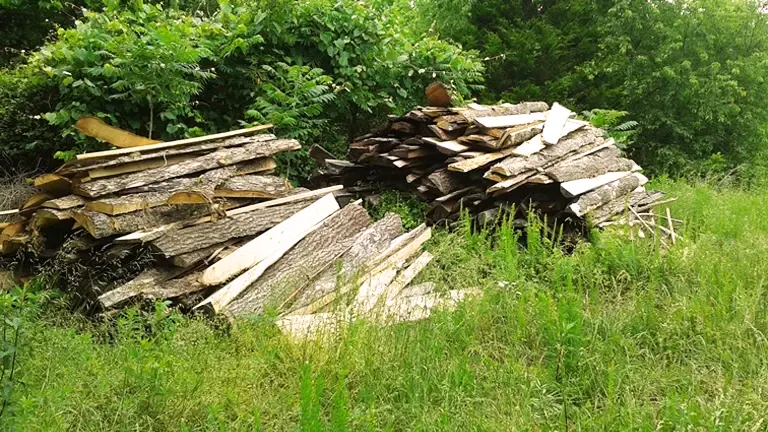
Dive into the sustainable and profitable methods to make the most of slab wood as we explore the best uses and disposal strategies for 2024.
Managing Slab Wood Waste Efficiently
Efficient management of slab wood waste is crucial for optimizing sawmill operations. By bundling slab woods and securing them with straps, you can effectively utilize loaders to move these bundles onto trailers or pickup trucks. This method not only saves significant time but also allows you to focus more on the primary task of milling lumber. Additionally, handling sawdust efficiently requires a simple yet effective system for collection, such as using chutes and buckets. This approach helps streamline the cleanup process, minimizing the need for labor-intensive shovel work and keeping your workspace tidy and efficient.
6 Best Disposing of Sawmill Slab Wood List:
- Firewood for Cozy Evenings
- Garden Wood Pathway
- Charismatic Cutting Boards
- Epoxy River Table Delight
- Crafting Corner Shelves
- Earth Friendly Mulch
1. Firewood for Cozy Evenings
Slab wood, often discarded for its irregular edges and shapes, finds a beautiful purpose as firewood. This use allows for the enjoyment of its rustic charm in the form of a picturesque firewood stack.
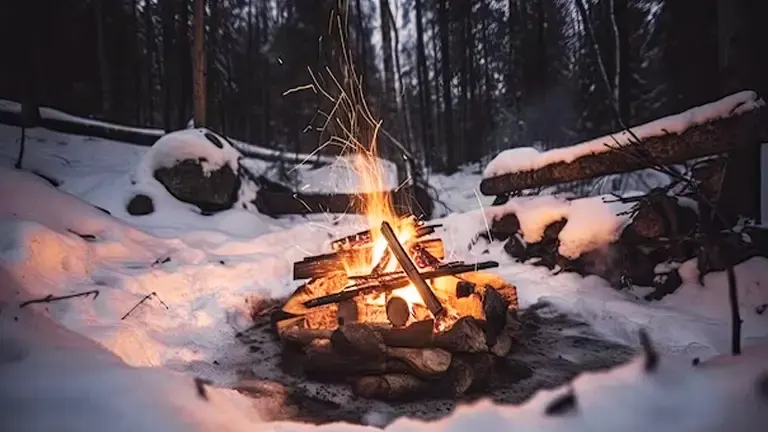
The experience is enhanced by the crackling sounds and warm ambiance a fire provides, offering a wonderful way to spend cozy evenings while promoting sustainability. This method not only maximizes the utility of each wood piece but also creates a delightful setting to enjoy the warmth and aesthetics of a natural fire.
Composting with Slab Woods for Firewood for Cozy Evenings
Composting slab woods introduces a creative and eco-friendly method to manage woodworking waste. By integrating slab woods into your compost, they break down over time, enriching the compost with nutrients essential for gardening. This nutrient-rich compost is perfect for boosting the health of gardens, flower beds, and even potted plants. It’s a full-circle approach to sustainability—turning what would be waste into a resource that gives back to the earth and enhances your green spaces.
Understanding Firewood Basics
Before we dive into the specifics, let’s touch on the fundamentals. Good firewood should ideally possess the following traits:
- High Heat Output: The amount of heat produced is crucial for keeping us warm during chilly nights.
- Low Moisture Content: Wet firewood not only burns inefficiently but can also create excessive smoke and lead to creosote buildup in the chimney.
- Slow Burn: Long-lasting firewood ensures that you don’t have to keep adding logs constantly.
- Aromatic Appeal: Certain types of firewood infuse the air with delightful scents, enhancing the overall ambiance.
Factors to Consider
- Intended Use: Are you seeking intense heat for heating your space, or are you more interested in the visual and aromatic aspects of the fire? Your intended use will guide your choice.
- Burn Time: For long evenings, slow-burning woods like oak and maple are optimal. For shorter gatherings, birch and fruit woods might be more suitable.
- Availability: Depending on where you live, some types of wood might be more accessible than others. Consider local options to reduce transportation costs.
- Storage Space: Hardwoods are dense and heavy, so ensure you have sufficient storage space before stocking up.
This guide not only helps in managing slab wood from sawmills but also enhances your experience with firewood, making it as enjoyable and sustainable as possible.
2. Garden Wood Pathway
Stepping into a garden should be an entrance into tranquility and beauty where nature’s elements are perfectly in sync. Among these elements, the garden wood pathway stands out, blending functionality with artistry. This pathway is not just a practical walkway but a creative statement that enhances the garden’s aesthetic and functional harmony.
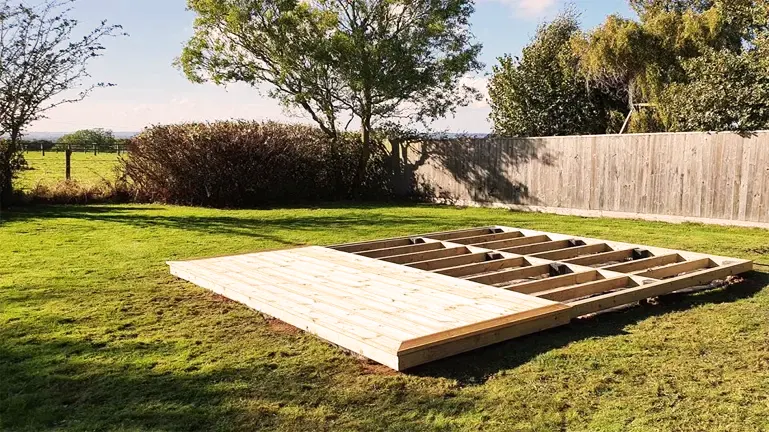
From the interplay of form and function to the resonance of textures underfoot, we’ll traverse the landscape of usability and aesthetics, delving into the very soul of these pathways. Let’s navigate the realms where nature and design intertwine, where every step leads not only deeper into the garden but also into a profound connection with the artistry of wooden pathways.
Composting with Slab Woods for Garden Wood Pathway
Composting with slab woods involves using discarded or chipped wood pieces, such as wood slabs, branches, and wood chips, in the composting process. These wood materials are mixed with other compostable materials like kitchen scraps, yard waste, and leaves to create a balanced compost pile.
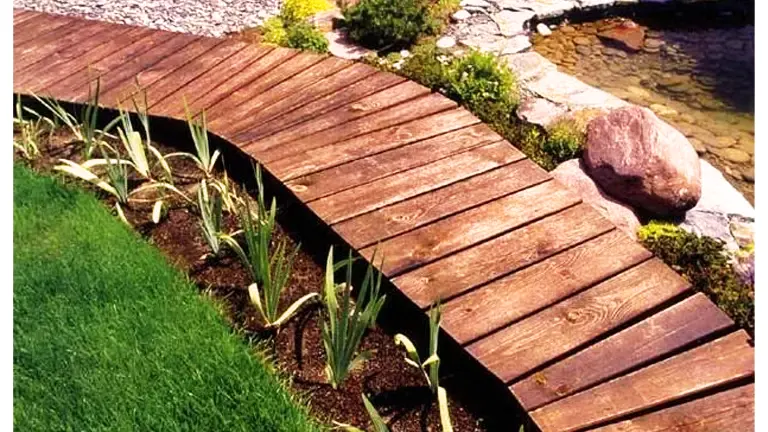
Benefits
- Carbon Source: Wood materials are considered a high-carbon or “brown” ingredient in composting, providing carbon-rich content that balances the nitrogen-rich “green” materials like kitchen waste and grass clippings.
- Aeration and Structure: Wood pieces create air pockets within the compost pile, improving aeration and preventing the pile from becoming compacted. This allows for better oxygen circulation, which is essential for efficient decomposition.
- Long-Term Nutrient Release: As the wood materials break down slowly, they release nutrients gradually over time. This can provide a sustained source of nutrients to plants and soil.
- Pathway Enhancement: Once the composting process is complete, the finished compost can be used as a nutrient-rich mulch for garden pathways. It helps retain soil moisture, suppress weed growth, and gradually improve the soil structure as it continues to break down.
How to Compost with Slab Woods
- Gather Materials: Collect wood slabs, branches, and wood chips. You can use a mix of wood types, but avoid using treated or painted wood that may contain harmful chemicals.
- Choose a Site: Select a well-draining composting area in your garden.
- Layering: Start with a layer of coarse materials like wood pieces at the bottom to create airflow. Alternate layers of wood pieces with “green” materials like kitchen scraps and yard waste.
- Size Consideration: Break larger wood pieces into manageable sizes. Smaller pieces will decompose faster.
- Moisture and Turning: Keep the compost pile moist but not waterlogged. Turn the pile regularly to promote even decomposition and prevent odors.
- Patience: Composting with wood materials takes longer compared to traditional composting, so be patient. It might take several months to a year for the wood to fully break down.
- Pathway Use: Once the compost is ready, spread it on your garden pathways to a depth of a few inches. Over time, it will integrate with the soil and provide nutrients to your plants.
3. Charismatic Cutting Boards
Introducing our exquisite line of Charismatic Cutting Boards – a fusion of artistry and functionality meticulously crafted from the finest Slab Woods. Elevate your culinary experience with these masterpieces that not only serve as exceptional kitchen tools but also as stunning decorative pieces. Each Charismatic Cutting Board is a testament to the inherent beauty of nature, showcasing the captivating grains, colors, and textures that only genuine Slab Woods can offer.
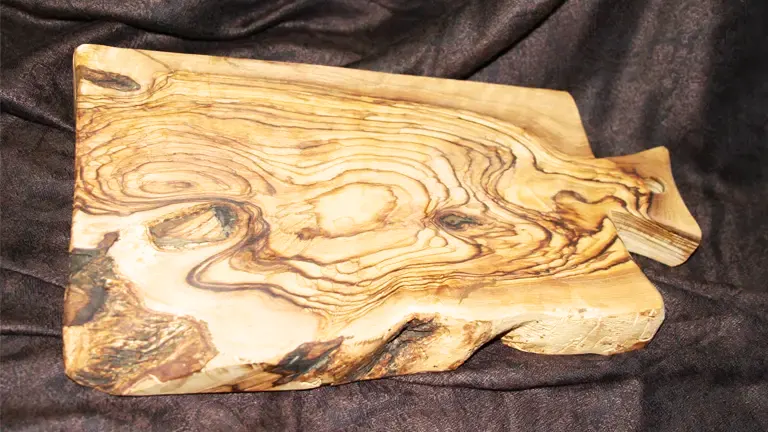
Our skilled artisans hand-select each piece of wood, ensuring that every cutting board tells a unique story through its intricate patterns and natural imperfections. Designed with both practicality and aesthetics in mind, these cutting boards provide a spacious and durable surface for all your cutting and food preparation needs.
Composting with Slab Woods for Charismatic Cutting Boards
Composting with slab woods for charismatic cutting boards involves repurposing wood slabs or offcuts to create unique and visually appealing cutting boards while also utilizing the wood waste for composting. Here’s how you can do it:
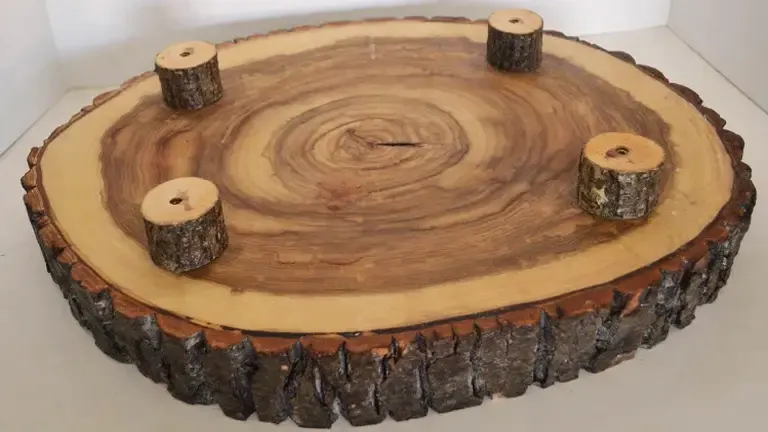
Materials Assembly
- Wood slabs or offcuts: These can be discarded pieces of hardwood, such as oak, maple, cherry, walnut, or any other food-safe wood.
- Woodworking tools: Saw, planer, router, sander, and clamps.
- Food-safe wood glue.
- Food-safe finish: Mineral oil, beeswax, or a specialized cutting board finish.
- Compostable materials: Organic kitchen scraps, yard waste, and other compostable materials.
Creating Charismatic Cutting Boards
- Wood Selection: Choose wood slabs or offcuts with visually appealing grains, colors, and patterns. Make sure the wood is food-safe and free from chemicals or treatments.
- Cutting and Design: Cut the wood into desired sizes and shapes for cutting boards. You can create interesting patterns by arranging wood pieces in different configurations.
- Gluing and Clamping: Apply food-safe wood glue to the edges of the wood pieces and press them together. Use clamps to hold the pieces tightly until the glue dries.
- Planing and Sanding: Plane and sand the glued pieces to create a smooth and even surface. Pay attention to edges and corners for safety.
- Routing and Finishing: Use a router to round over the edges and create a comfortable grip. Finish the cutting board with a food-safe finish like mineral oil or beeswax, which enhances the wood’s natural beauty and protects it from moisture.
4. Epoxy River Table Delight
Discover the enchanting fusion of nature and innovation with our Epoxy River Table Delight collection. Crafted from exquisite Slab Woods, each table features a mesmerizing “river” of epoxy resin, creating a captivating interplay of textures and colors. These functional art pieces redefine elegance and spark conversations, making them perfect centerpieces for any space. Experience the harmony of nature and modern craftsmanship with Epoxy River Table Delight.
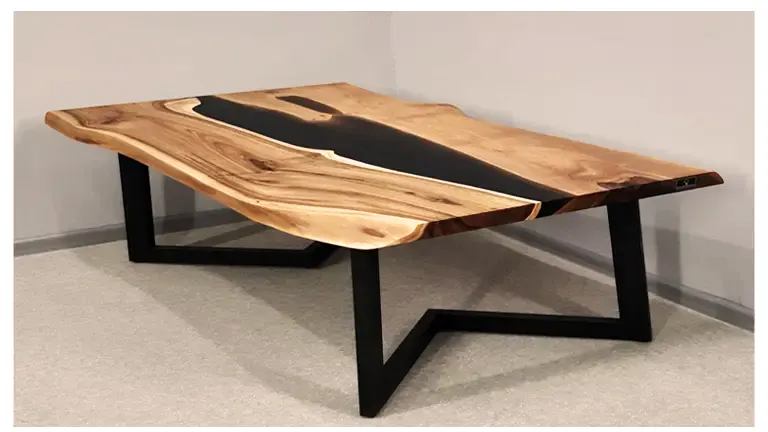
Epoxy River Table Delight goes beyond mere furniture – it is an artistic expression that ignites conversation and introspection. Whether placed in a contemporary living space or a traditional setting, these tables effortlessly become focal points that inspire wonder and contemplation. The juxtaposition of the raw, organic Slab Woods with the modern, sleek epoxy design makes each piece a statement of elegance and innovation.
Composting with Slab Woods for Epoxy River Table Delight
Composting with slab woods in the context of epoxy river tables involves using wood offcuts and waste materials generated from creating epoxy river tables for composting. Epoxy river tables are unique furniture pieces that incorporate epoxy resin to create stunning visual effects, often resembling rivers or other flowing elements within the wooden slab. Here’s how you can combine the creation of epoxy river tables with composting:
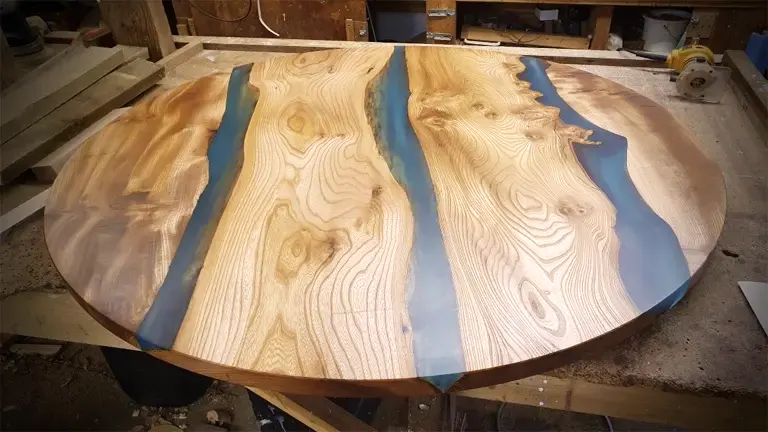
Equipment Necessary
- Wood slabs or offcuts: These are the main materials for creating the epoxy river table.
- Epoxy resin: Used to create the river-like effect within the wood.
- Woodworking tools: Saw, planer, sander, and clamps.
- Composting materials: Organic kitchen scraps, yard waste, and other compostable materials.
Creating Epoxy River Tables
- Wood Selection: Choose wood slabs or offcuts with interesting grain patterns and colors. Make sure the wood is properly dried and free from defects.
- Cutting and Assembling: Cut the wood slabs to the desired size and shape for your table. Arrange them to create a gap that will be filled with epoxy resin, resembling a river.
- Epoxy Pouring: Mix and pour epoxy resin into the gap between the wood slabs. You can add pigments, dyes, or other materials to create various visual effects.
- Curing: Allow the epoxy to cure according to the manufacturer’s instructions. This usually takes several days.
- Finishing: Sand and finish the entire tabletop, including the epoxy river, to create a smooth and polished surface.
5. Crafting Corner Shelves
Our Crafting Corner Shelves are a tribute to the versatility of Slab Woods, each one uniquely showcasing the intricate patterns and rich tones that nature has bestowed upon them. Carefully curated by skilled artisans, these shelves bring a touch of the outdoors into your living space while offering a platform for your cherished items.
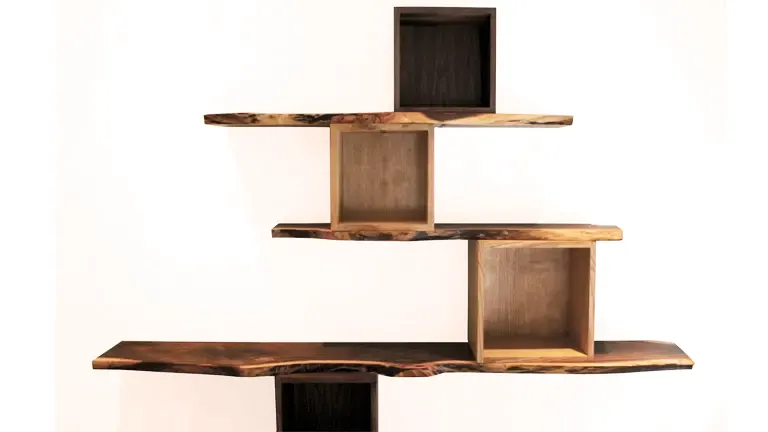
Designed to fit snugly into any corner, these shelves optimize your space by transforming neglected corners into stylish focal points. Whether displaying books, collectibles, or plants, these shelves become a canvas for your creativity, allowing you to curate a personalized and aesthetically pleasing arrangement.
Composting with slab woods for Crafting Corner Shelves
Composting with slab woods in the context of crafting corner shelves involves repurposing wood scraps and offcuts from your crafting projects for composting. These wood materials can be turned into nutrient-rich compost to enrich your garden soil. Here’s how you can combine crafting corner shelves with composting:
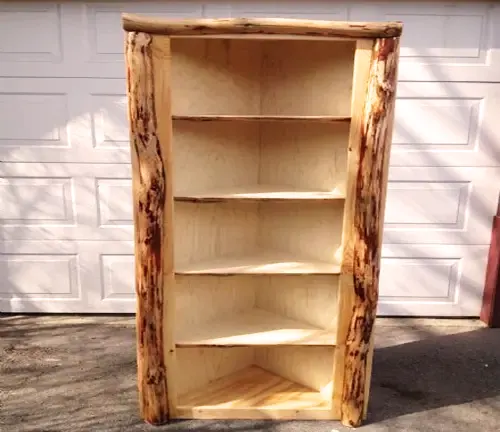
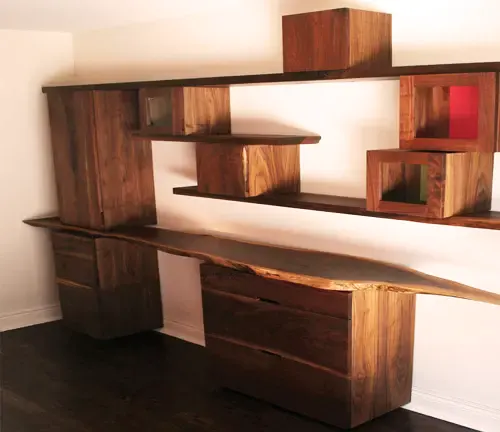
Materials Needed
- Wood scraps and offcuts: These are the main materials from your crafting corner shelf project that you’ll be composting.
- Composting materials: Organic kitchen scraps, yard waste, and other compostable materials.
- Compost bin or pile: A designated area or container for composting.
Creating Crafting Corner Shelves
- Wood Selection: Choose wood scraps and offcuts that are suitable for crafting corner shelves. These could be small pieces of lumber, plywood, or other types of wood.
- Design and Cutting: Plan out your corner shelf design and cut the wood pieces accordingly. Ensure that the pieces fit together securely to create stable shelves.
- Assembly: Assemble the wood pieces using appropriate woodworking techniques, such as gluing, nailing, or screwing. Sand and finish the shelves if desired.
6. Earth Friendly Mulch
The natural beauty of Slab Woods is expertly harnessed in every bag of Earth Friendly Mulch, adding a touch of rustic elegance to gardens, pathways, and plant beds. The mulch’s natural composition allows for water retention, weed suppression, and temperature regulation, providing your plants with a healthier and more vibrant environment to thrive.
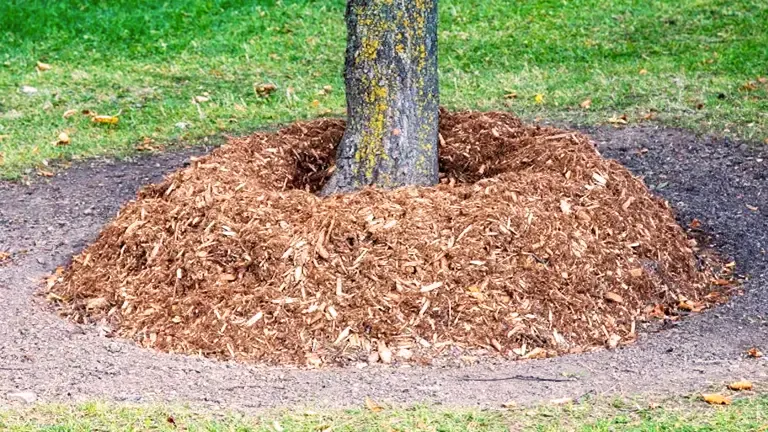
By selecting our Earth Friendly Mulch, you’re not just nurturing your landscape but also making a positive impact on the environment. Join us in the journey towards sustainability, where Slab Woods find new life as an eco-friendly landscaping solution that embodies both beauty and responsibility. Experience the harmony of nature and conscientious choices with Earth Friendly Mulch – a step towards a more sustainable future.
Composting with Slab Wood for Earth-Friendly Mulch
Composting with slab wood for earth-friendly mulch is a sustainable practice that involves recycling wood waste generated from lumber processing into nutrient-rich mulch through composting. This process offers several environmental and practical benefits, as it reduces waste, conserves resources, and provides an organic and effective mulch option for gardening and landscaping purposes. Here’s some information about composting with slab woods for earth-friendly mulch:
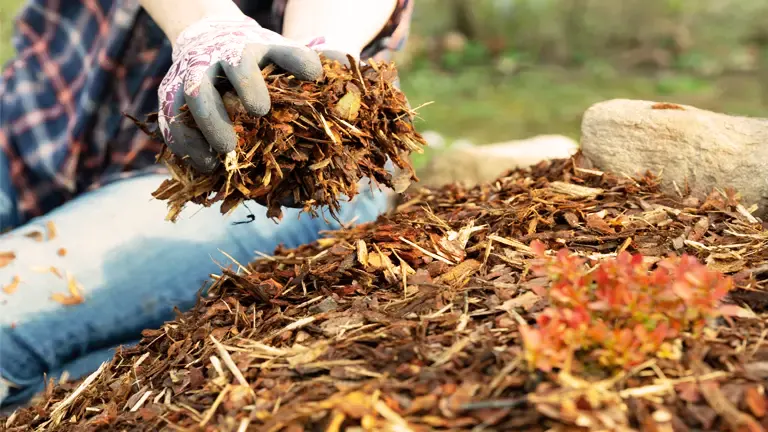
Slab Woods and Composting Process
Slab woods are the outer portions of logs that are removed during the milling process to create flat lumber. These slabs often contain bark, wood chips, and other organic materials. Instead of being discarded or burned, slab woods can be composted to create nutrient-rich mulch.
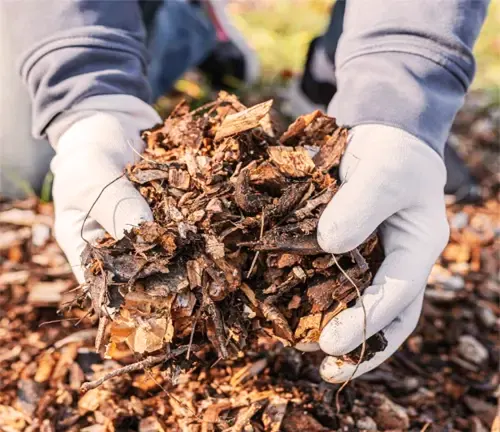
The composting process involves breaking down organic materials into stable, nutrient-rich soil amendments. When composting slab woods, the materials are typically chipped or shredded to speed up the decomposition process. The composting process can be accelerated by creating the right conditions, including the right mix of carbon-rich (brown) materials like the wood chips and nitrogen-rich (green) materials like kitchen scraps or grass clippings. Adequate moisture, aeration, and turning of the compost pile are also essential for efficient decomposition.
Benefits
- Waste Reduction: Composting slab woods reduces the amount of wood waste that ends up in landfills or is burned, contributing to a more sustainable waste management system.
- Resource Conservation: By using slab woods for mulch, you’re utilizing a resource that might otherwise be wasted, reducing the need for virgin materials for mulching.
- Nutrient-Rich Mulch: The composted slab woods create a nutrient-rich mulch that improves soil structure, retains moisture, and provides a slow release of nutrients to plants.
- Weed Suppression: Mulch created from composted slab woods can help suppress weed growth, reducing the need for chemical herbicides.
- Erosion Control: The mulch can help prevent soil erosion, especially on sloped areas, by providing a protective layer.
All in all Conclusion
In conclusion, effective disposal of slab woods from a sawmill is crucial for both environmental sustainability and operational efficiency. By implementing a combination of responsible practices, including repurposing, recycling, and biomass utilization, sawmills can minimize waste, reduce their carbon footprint, and potentially generate additional revenue streams. Furthermore, collaborating with local communities and exploring innovative technologies will contribute to a more holistic approach towards waste management. Embracing these best practices not only aligns with environmental stewardship but also ensures that the valuable resources within slab woods are maximized, benefiting both the industry and the planet in the long run.
FAQs
- What are slab woods from a sawmill?
Slab woods are the outer pieces of a log that are cut away during the milling process. These pieces often have irregular shapes, bark, and unique characteristics that make them less suitable for traditional woodworking projects. - Why shouldn’t I just throw away slab woods?
While slab woods might not fit the mold for traditional woodworking projects, they can be repurposed and upcycled in creative ways, reducing waste and promoting sustainability. - What is the best way to use slab woods as firewood?
Slab woods make excellent firewood due to their irregular shapes and quick-burning properties. Stack them in a designated area for a rustic firewood pile that adds character to your outdoor space. - How can I turn slab woods into garden pathways?
To create a garden pathway using slab woods, lay them down in the desired path, leaving space between each piece. This adds a natural and visually appealing touch to your garden while serving a functional purpose. - What’s the process for making cutting boards from slab woods?
Crafting cutting boards from slab woods involves sanding down the surfaces, treating the wood with food-safe finishes, and potentially adding a handle or decorative elements. The unique shapes of slab woods create stunning and unique cutting board designs. - Can I make epoxy river tables from slab woods?
Absolutely! Slab woods can be combined with epoxy resin to create mesmerizing river table designs. The irregular edges of the slabs add to the natural aesthetic of the table, making it a popular woodworking project. - Are corner shelves a practical use for slab woods?
Yes, corner shelves are a creative and practical use for slab woods. Sand the edges of the slabs for a smooth finish, and then add decorative brackets to transform them into unique storage solutions that fit snugly into corners. - How can slab woods be transformed into earth-friendly mulch?
Slab woods can be chipped or mulched to create organic garden mulch. This mulch helps with moisture retention, temperature regulation, and weed suppression while providing a sustainable way to recycle the wood. - Can I sell or donate my upcycled creations made from slab woods?
Absolutely! Depending on the quality of your upcycled creations, you might find a market for selling them. Additionally, donating them to local markets, charity events, or fundraisers can help showcase your woodworking skills while contributing to a good cause. - Are there any safety considerations when working with slab woods?
Safety should always be a priority when working with wood. Wear appropriate safety gear, use proper tools, and follow woodworking safety guidelines. Be cautious of splinters and ensure that the wood is free from any hazardous materials before repurposing.
We’d be thrilled to learn from your experiences too! Feel free to drop a comment below and share your personal stories and insights about the best ways to dispose of slab woods from a sawmill. Your creative ideas and thoughts could be a game-changer for fellow woodworkers who are looking for innovative and sustainable solutions. Let’s collaborate and make a positive impact together!

Edward Smith
Forestry AuthorWoodworking is about more than crafting; it's a harmonious connection with nature, mastering tools, and preserving our environment. I'm here to share my knowledge and experiences with you, forging a future where we can embrace wood's beauty and utility while safeguarding our forests' health and diversity.













Leave your comment